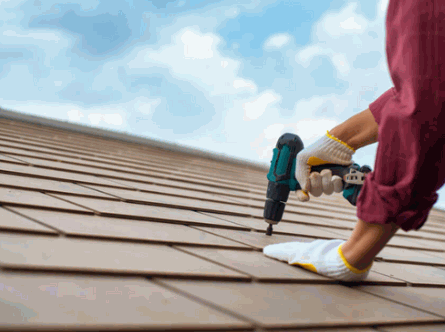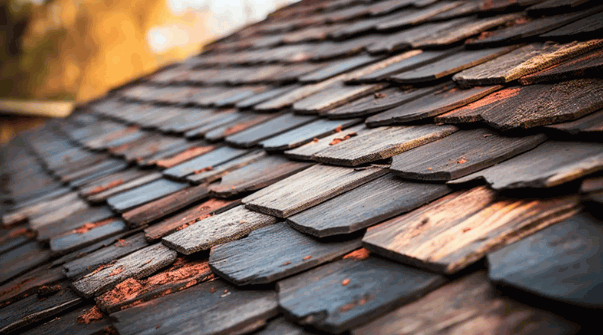Table of Contents
When a roof exhibits signs of wear and tear, the decision between patching and a complete roof replacement can be challenging for homeowners. This article examines the viability of patching a roof, emphasizing key indicators that roof repair is necessary and outlining the various types of roof damage that may be encountered, including damage to shingles and flashing. We will provide a comprehensive, step-by-step guide to the patching process, discuss the circumstances under which patching is appropriate, and evaluate the associated cost-effective benefits and potential drawbacks. By the conclusion of this article, readers will possess a clearer understanding of how to effectively protect their homes and maintain the structural integrity of their roofing systems.
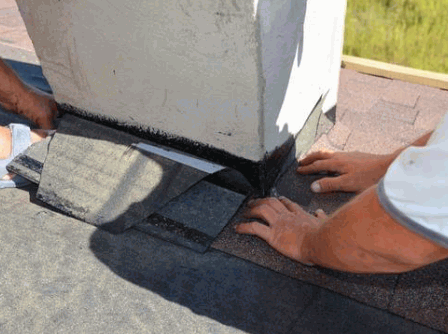
Can You Patch A Roof Instead Of Replacing It?
When evaluating roof repair options, many homeowners contemplate the feasibility of patching a roof instead of opting for a complete replacement. Patching can serve as a cost-effective solution for minor issues, enabling homeowners to preserve the integrity of their roofing without the immediate financial obligation associated with a full replacement.
However, it is crucial to assess the extent and type of damage, as well as the age of the roofing materials in question. Engaging with a qualified roofing contractor can provide valuable insights into the efficacy of patching versus replacement and offer a detailed estimate that aligns with your budget constraints, maintenance requirements, and adherence to local building codes.
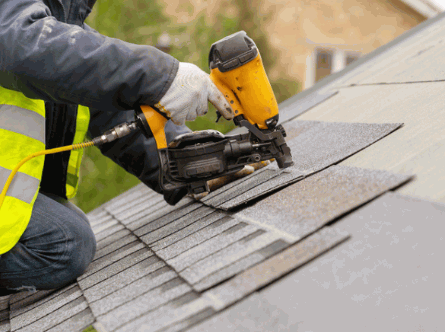
What Are The Signs That Your Roof Needs Repair?
It is essential for homeowners to recognise the signs indicating that their roof requires repair in order to maintain its structural integrity, and effectiveness, and prevent further damage.
Common indicators include visible leaks, damaged tiles, sagging areas, and water stains on ceilings. Promptly addressing these issues can help avoid costly repairs and ensure the longevity of the roofing system.
Engaging a professional roofing contractor for a comprehensive inspection can provide valuable insights into necessary maintenance, repair, and potential replacement options that align with one’s budget and specific needs.
Leaks
Leaks represent one of the most critical indicators that a roof requires immediate attention, as they can result in significant water damage and jeopardise the structural integrity of a residence, requiring urgent intervention from roofing experts. Identifying the source of these leaks may prove to be challenging; however, they often present as water stains on ceilings or walls, particularly following heavy rainfall.
Several factors contribute to the deterioration of a roof, including damaged flashing, worn roof tiles, and instances of improper installation, which may require professional evaluation by skilled contractors. The flashing, which serves to redirect water away from essential areas, may become compromised due to ageing or adverse weather conditions, impacting the overall integrity and efficiency of the roof. Similarly, worn roof tiles, often a consequence of prolonged exposure to sunlight and rain, become less effective in providing a watertight seal. Homeowners are advised to remain vigilant and conduct regular inspections of their roofs for early signs of wear and tear, as well as to consider scheduling professional assessments to evaluate potential risks and ensure compliance with building codes.
Key actions to undertake include:
- Inspecting for visible discolouration or dampness within the interior of the home.
- Examining loft spaces for indicators of water entry.
- Monitoring the condition of roof tiles following storm events.
Engaging a qualified roofing contractor is essential not only for necessary repairs but also for routine maintenance and ensuring the longevity of the roofing system. Such professionals can assist in identifying potential issues before they escalate, ultimately saving homeowners from incurring costly damages and repair costs.
Learn about: How To Prevent Roof From Leaking
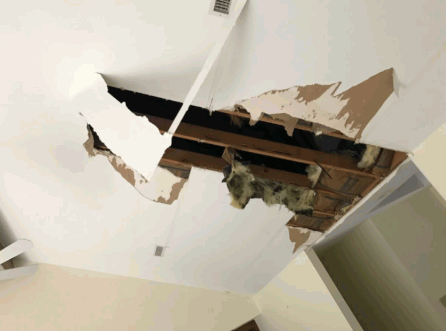
Damaged Shingles
Damaged shingles are a significant indicator that a roof may require repair, as they can expose the home to adverse weather conditions and potentially lead to leaks or additional damage, affecting the home’s structural integrity. Signs of damaged shingles include curling, cracking, or missing pieces, all of which can compromise the roof’s ability to effectively protect the home, necessitating timely intervention by roofing experts. Regular inspections are essential to identify these issues early and prevent more costly repairs in the future, ensuring the integrity and effectiveness of the roofing system.
The impact of various weather conditions on roofing materials, such as heavy rain, strong winds, or extreme heat, can accelerate the deterioration of shingles and other roofing components, highlighting the importance of maintenance to preserve the roof. Homeowners should conduct periodic inspections, particularly following severe weather events, to assess the integrity of their roofs and the effectiveness of the roofing materials. It is important to look for:
- Curling edges, which may indicate wear from sun exposure;
- Cracks that may develop due to temperature fluctuations;
- Missing or loose shingles that could be dislodged by high winds.
If any signs of damage are detected, homeowners should consider options such as repair or complete replacement of the affected areas, depending on the age and extent of the damage. Engaging a qualified roofing contractor is crucial, as they can offer expert advice and solutions tailored to the specific needs of the roof, thereby ensuring its longevity, enhanced protection against the elements, and adherence to warranties.
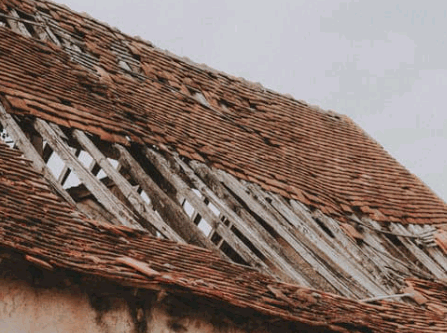
Sagging Roof
A sagging roof is a significant concern that may indicate potential issues with structural integrity, requiring immediate evaluation by roofing professionals to assess the underlying causes. This condition can arise from various factors, including water damage, poor installation, or excessive weight from debris, highlighting the need for timely inspection and repair. Homeowners should remain vigilant for any sagging areas, as these inconsistencies can compromise the overall safety and structural integrity of the residence.
Recognising the signs of this concerning issue is crucial, as it often reflects more profound problems beyond the visible distortion, necessitating a comprehensive assessment by roofing experts. Contributing factors may include:
- Water intrusion from leaks, can lead to wood rot and weaken the framework.
- Improper installation techniques may result in inadequate support.
- Accumulation of snow or fallen branches that exert excessive weight on the structure.
Each of these factors can contribute to an unsafe living environment. Therefore, seeking a professional inspection is essential, as experienced roofing contractors have the expertise to accurately assess the situation and implement the necessary repairs.
Neglecting to address a sagging roof promptly can lead to costly repairs, increased repair costs, and jeopardise the safety of the occupants.
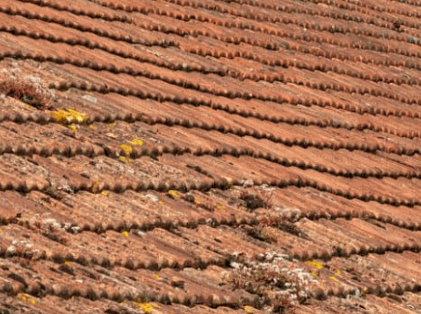
Water Stains On The Ceiling
Water stains on ceilings are often indicative of a roofing issue, as they suggest that water is infiltrating the roof and affecting the interior of the property. These stains may vary in size and colour, and they should not be disregarded, as they can signal significant underlying problems that affect the roof’s integrity.
Recognising these stains is essential for homeowners, as they function as a warning signal of potential damage and risks to the roofing system. Stains may present in shades of brown, yellow, or grey, typically in circular or irregular shapes, often indicating leaks from the roofing system.
- It is important to check for additional signs such as damp patches or peeling paint.
- Assess the area above the stained ceiling for any visible leaks.
It is advisable to take prompt action by documenting the stains with photographs and consulting a qualified roofing professional to evaluate the situation and provide an expert assessment. Delaying repairs can lead to more extensive damage, increased costs, and compromise the safety and integrity of the home. Timely professional inspections are crucial for preventing further deterioration and ensuring that the structural integrity of the home is maintained.
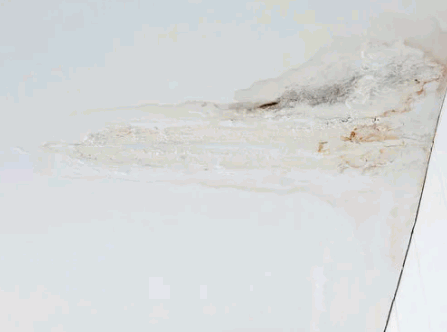
What Are The Different Types Of Roof Damage?
Understanding the various types of roof damage is essential for homeowners to effectively maintain and repair their roofing systems, ensuring their efficiency and compliance with local building codes. Common types of damage include:
- Tile damage
- Flashing damage
- Roof deck damage
- Gutter damage
Each of these presents specific risks and requires distinct repair approaches, tailored to the specific needs and conditions of the roofing. By identifying these types of damage early, homeowners can make informed decisions regarding maintenance and engage qualified roofing contractors to address the issues in a timely manner, ensuring cost-effectiveness and longevity of the roof.
Regular inspections and proactive maintenance are critical to ensuring the longevity, functionality, and efficiency of roofing systems.
Shingle Damage
Shingle damage can significantly impact the performance of a roof by compromising its ability to serve as a barrier against the elements, potentially leading to increased repair costs. This damage may present itself through curling, cracking, or granule loss, potentially resulting in leaks, increased repair costs, and further structural complications.
The causes of shingle damage are not limited to ordinary wear and tear; rather, severe weather conditions such as heavy rainfall, hail, and extreme temperature fluctuations can exacerbate these issues. Furthermore, improper installation techniques may render roofs more susceptible to damage, leading to premature deterioration.
Homeowners must understand that neglecting regular maintenance or postponing essential repairs can lead to increasingly complex problems in the future, impacting both the safety and financial investment in the home. Therefore, it is crucial to invest in routine inspections conducted by qualified roofing professionals. These experts can identify potential issues at an early stage, ensuring that timely repairs are carried out, ultimately preserving the integrity and longevity of the roofing system.
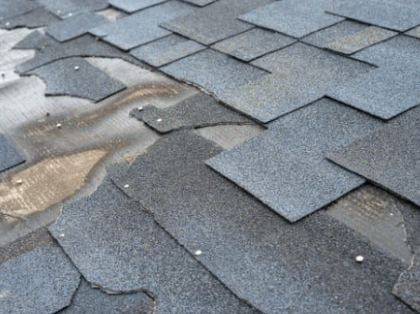
Flashing Damage
Flashing damage represents a significant concern for homeowners, as it can result in water leaks around chimneys, vents, and other roof penetrations, requiring immediate attention from roofing professionals to maintain roof integrity. The effectiveness of flashing in preventing water intrusion is essential for maintaining the integrity of the roof and the overall safety of the home.
When installed correctly, flashing serves as a protective barrier, directing water away from vulnerable areas of the roof. However, over time, various factors such as adverse weather conditions, improper installation, or material fatigue can severely compromise its effectiveness.
Homeowners should remain vigilant for several signs that may indicate potential flashing damage, including stains on interior walls, deteriorating sealant, or visible gaps at the edges of the flashing.
- Regular maintenance and inspections are critical.
- Professional evaluations by experts can help identify hidden issues.
- Timely repairs are essential to protect the overall structure.
In conclusion, addressing flashing concerns promptly is vital to ensure roofs remain watertight, thereby safeguarding both the interior of the home and the long-term investment.
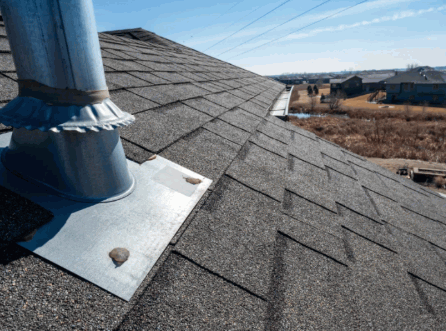
Roof Deck Damage In The UK
Roof deck damage presents significant risks to the structural integrity of a home in the UK, as it pertains to the underlying framework that supports the roof. Such damage may arise from leaks, moisture accumulation, or extreme weather conditions.
It is imperative for homeowners to recognise the signs of roof deck damage. Common indicators include sagging ceilings, water stains on walls, and noticeable deterioration of shingles. Additional symptoms may consist of:
- Increased energy bills due to improper insulation
- The formation of mould or mildew in various areas
- The presence of drooping or uneven rooflines
These symptoms not only undermine the roof’s effectiveness but can also result in substantial and costly repairs if not addressed promptly. Therefore, it is essential to engage qualified roofing contractors for comprehensive assessments and timely repairs to mitigate potential risks. Expert evaluations can accurately identify the underlying causes of damage, ensuring that appropriate remedies are implemented, which ultimately protects the homeowner’s investment and preserves the property’s value.
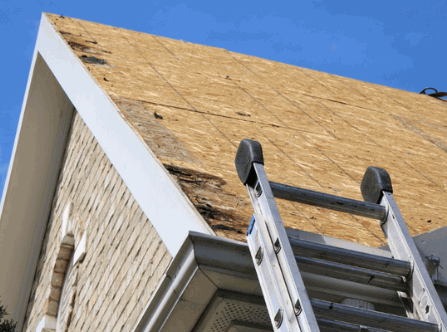
Gutter Damage And Roof Maintenance
Gutter damage can result in significant water drainage issues, adversely affecting both the roof and the structural integrity of a home. Regular roof maintenance is essential because when gutters do not function properly, water may accumulate on the roof, leading to leaks and damage over time.
Proper maintenance of gutters is essential to ensure that drainage systems operate at optimal efficiency. Homeowners who overlook this critical aspect may encounter serious consequences, such as foundation damage and mould growth.
Identifying damage is relatively straightforward; key indicators include sagging sections, rust spots, or overflow during periods of rainfall. Regular inspections can help prevent more extensive issues from developing in the future.
It is advisable to:
- Check for debris build-up that may obstruct water flow.
- Inspect seams and joints, as these are common areas where leaks occur.
- Monitor the condition of downspouts to ensure there are no blockages.
Should repairs be necessary, either do-it-yourself methods or hiring professional roofing contractors can be effective strategies. These experts not only offer repair services but also ensure that gutter systems are properly aligned, thereby promoting effective drainage and protecting the property from potential damage.
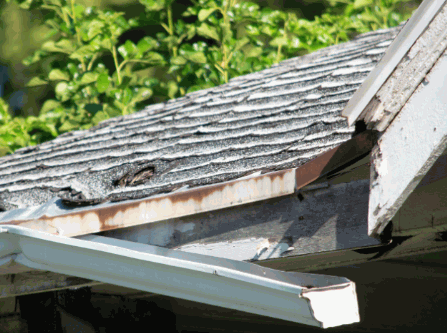
How To Patch A Roof Section?
Patching a roof represents a sensible solution for addressing minor damage and extending the longevity of the roofing system. To carry out an effective roof patch, it is essential to gather the necessary tools and materials, whether in Edinburgh or elsewhere while adhering to a systematic approach to ensure the repair’s effectiveness.
Consulting a professional roofing contractor can provide valuable insights into best practices for patching, thereby helping to maintain the structural integrity of the home and preventing expensive repairs in the future.
Gather The Necessary Tools And Materials
Before undertaking a roof patching project, it is essential to gather the necessary tools and materials to facilitate a successful repair. Commonly required tools include a roofing knife, a ladder, safety gear, and patching materials such as shingles, roofing cement, or flashing. Preparing all items in advance can streamline the process and enhance the overall effectiveness of the repair.
When engaged in roof repairs, possessing the appropriate tools can significantly influence the complexity of the task. Essential items to consider include:
- Roofing Knife: Used for accurately cutting shingles and other materials.
- Ladder: A stable ladder is vital for ensuring safe access to the roof.
- Safety Gear: This includes gloves, goggles, and a hard hat to protect against potential hazards.
- Patching Materials: Options such as shingles, roofing cement, or flashing serve to mend leaks and reinforce the roof’s integrity.
Prioritising safety precautions is of utmost importance, not only to prevent accidents but also to enhance the quality of the repair work.
Additionally, it is prudent to consider the advantages of consulting a roofing contractor. Their expertise can offer valuable insights, ensuring that repairs are executed effectively and efficiently while also minimising risks associated with DIY projects.
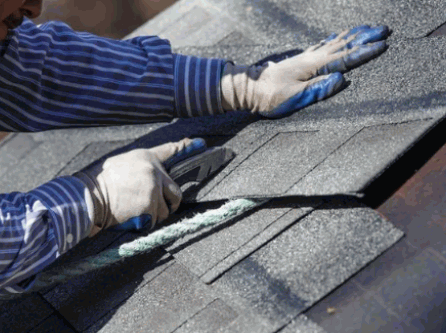
Identify And Mark Damaged Areas
Identifying and marking damaged areas of the roof is a critical first step in the patching process. It is essential to conduct a thorough inspection of the roof, particularly small sections, to locate any tiles that are cracked, missing, or otherwise damaged. Once identified, these areas should be highlighted for repair using chalk or a marker.
Plus assessing visible damage, it is crucial to examine the flashing around chimneys and vents, as these areas are often susceptible to leaks. Safety should always be prioritized during the roof inspection. It is advisable to use a sturdy ladder and to wear appropriate footwear to prevent slipping.
- Ensure that the area surrounding the roof is clear of debris and obstacles.
- Have a spotter present if working on a steep or high roof.
After evaluating the conditions, it is prudent to take photographs of the marked areas for reference and to document the extent of the damage. If significant issues are identified, or if there is any uncertainty regarding the inspection findings, consulting with professionals can provide valuable insights and ensure that repairs are executed properly, ultimately protecting the integrity of the home in the long term.
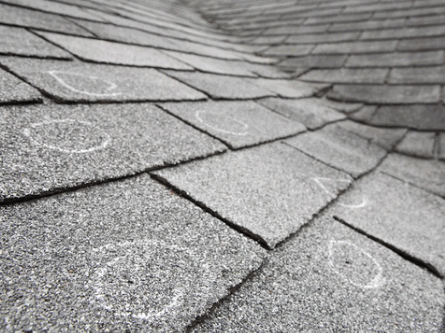
Clean And Prepare The Area
After identifying the damaged areas, the subsequent step is to clean and prepare the surface for patching. It is essential to remove any debris, dirt, or old roofing materials to ensure a smooth surface for the new patch, as this is critical for effective adhesion.
To achieve optimal results in the repair process, thorough preparation is of utmost importance. This process involves several key steps:
- Safety First: It is imperative to wear appropriate safety gear, including gloves, goggles, and a sturdy hard hat, to protect against falling debris.
- Removing Old Shingles: Begin by carefully prising up the old shingles using a roofing fork or pry bar. Attention should be paid to footing, especially when working on sloped roofs.
- Debris Clearance: Once the shingles have been removed, clear away any nails and remaining granules or underlay materials. This ensures that the new material can adhere properly without obstructions.
By following these steps, one not only prepares for a successful repair but also minimises the risks associated with handling potentially hazardous materials.
Apply Patching Materials
Applying patching materials correctly is essential for the success of any roof repair. It is important to select the appropriate materials based on the specific type of damage, whether it involves tiles, roofing cement, or flashing, and to ensure that these materials are applied in accordance with the manufacturer’s instructions.
To achieve optimal results, one must also take into account the necessary layering techniques critical for effective application. This process should commence with a thorough cleaning of the damaged area, ensuring the removal of any debris, dirt, or loose materials that may impede adhesion.
When applying patching materials, it is vital to layer them appropriately; this typically entails creating a base layer followed by additional layers for reinforcement. Adhering to proper curing times is equally important; each layer should be allowed to cure as specified by the manufacturer, thus avoiding the inclination to expedite the process.
Adhering to best practices is imperative for maintaining the integrity of the roofing system, as neglect or improper methods can lead to further complications in the future.
The following steps outline the recommended procedure:
- Clean the damaged area.
- Apply the base layer of patching material.
- Allow for curing as specified by the manufacturer.
- Add subsequent layers as necessary.
- Conduct a final inspection for any missed spots.
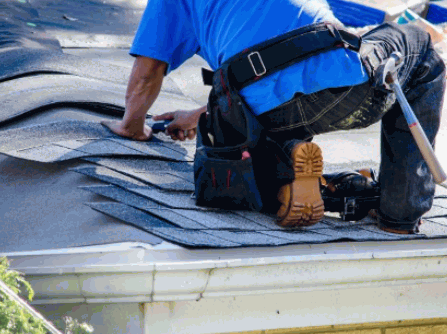
Seal And Reinforce The Patch
Sealing and reinforcing the patch is a critical step in ensuring long-lasting protection against leaks and further damage. After applying the patching materials, it is advisable to use roofing cement or sealant to establish a watertight barrier around the edges of the patch, thereby enhancing its durability. In the UK, it’s common practice to follow these steps to protect roofs from the country’s variable weather conditions.
To effectively execute this sealing process, it is essential to select the appropriate materials that are compatible with the specific roofing system. Common options include:
- Roofing Cement: This thick, tar-like substance adheres effectively and is particularly suitable for sealing around edges and seams.
- Sealants: Available in tubes for convenient application, these products are designed to create a flexible, waterproof layer that effectively prevents moisture ingress.
- Membrane Systems: For larger areas or flat roofs, employing a rubber or liquid membrane can provide extensive coverage and reliability.
It is imperative to ensure that the patch is secure and properly sealed, as this will safeguard the structure from potential leaks and minimise further complications in the future.
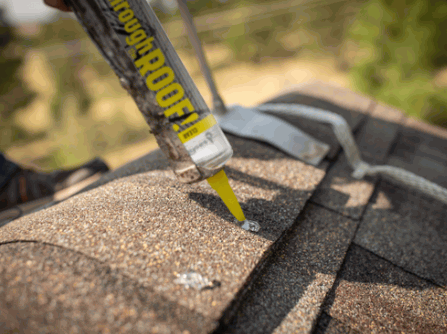
Inspect And Test The Patched Area
Upon completion of the patching process, it is imperative to inspect and test the patched area to ensure its effectiveness. One should look for any indications of moisture or leaks and consider scheduling a follow-up inspection with a roofing contractor to verify the integrity of the repair.
During the inspection, homeowners should meticulously observe various indicators that may warrant further action. It is advisable to remain vigilant for the following:
- Cracks or gaps, can compromise the integrity of the patch.
- Discolouration on the surface, suggesting potential moisture retention.
- Any bulging or sagging areas that may indicate structural concerns.
Furthermore, ongoing maintenance is critical; regular inspections can identify minor issues before they escalate into more significant, costly repairs. Promptly addressing small problems ensures the longevity of the repair and sustains the overall effectiveness of the roofing system.
When Is It Appropriate To Patch A Roof Instead Of Replacing It?
Determining whether to repair a roof or proceed with a complete replacement depends on several critical factors, including the extent of the damage, the age of the roof, and the overall condition of the roofing materials. Homeowners should carefully evaluate these considerations, often in consultation with a qualified roofing contractor, to arrive at a decision that aligns with their budget and long-term maintenance objectives.
When the damage is localized and does not compromise the structural integrity of the roof, patching may represent a viable and cost-effective solution.
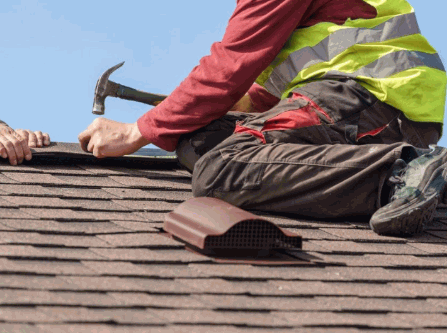
What Are The Benefits And Drawbacks Of Patching A Roof?
Patching a roof presents several benefits and drawbacks that homeowners should carefully evaluate prior to making a decision. The primary advantage of this approach is its cost-effectiveness, as it enables targeted repairs without incurring the higher costs associated with a complete roof replacement.
However, it is important to recognise that patching may not resolve underlying issues and could result in additional complications if the damage is more extensive than initially assessed. A comprehensive understanding of these factors will assist homeowners in making informed decisions regarding their roofing maintenance requirements.
Benefits Of Patching A Roof
The advantages of patching a roof are primarily focused on its cost-effectiveness and efficiency in resolving minor issues before they develop into more significant problems. Homeowners can achieve substantial savings on repairs while extending the lifespan of their existing roofing materials, making patching an appealing option for those mindful of their budgets.
Patching a roof not only contributes to reducing overall repair costs but also significantly reduces the time required to complete the work. This is particularly beneficial for individuals with busy schedules or families. For example, a simple roof patch can typically be completed within a single day, whereas a full roof replacement may take several weeks, leading to considerable disruption. In cities like Edinburgh, where weather conditions can change rapidly, quick patching solutions are especially valued.
This approach minimises disturbances to daily life, allowing homeowners to maintain a comfortable living environment without extensive noise or the necessity of temporary relocation.
- For instance, following a storm, a prompt patch can prevent leaks from worsening, thereby averting costly water damage to interior spaces.
- A small hole caused by a fallen tree branch can be addressed immediately, greatly enhancing the protection provided by the roof.
By addressing issues promptly through patching, the roof’s integrity remains intact, ensuring safety and comfort while avoiding the stress associated with larger repairs in the future.
Drawbacks Of Patching A Roof
Patching a roof, while beneficial, also presents several potential drawbacks that homeowners must consider. A primary concern is that patching may not resolve underlying issues, which could lead to additional damage and unforeseen repair expenses in the future.
This method often neglects critical problems that may exist beneath the surface, such as deteriorating materials or improper installation. Such undetected damage can jeopardise the overall integrity of the roofing system.
Additionally, patches typically have a shorter lifespan compared to a complete roof replacement. Although patches can offer a temporary solution, they often necessitate ongoing maintenance and repeated interventions, thereby increasing overall costs and inconveniences.
Consequently, homeowners are advised to obtain comprehensive assessments from qualified roofing contractors who can identify all potential issues and recommend the most appropriate course of action.
- Unattended underlying problems
- Limited lifespan of patches
- Increasing maintenance requirements
